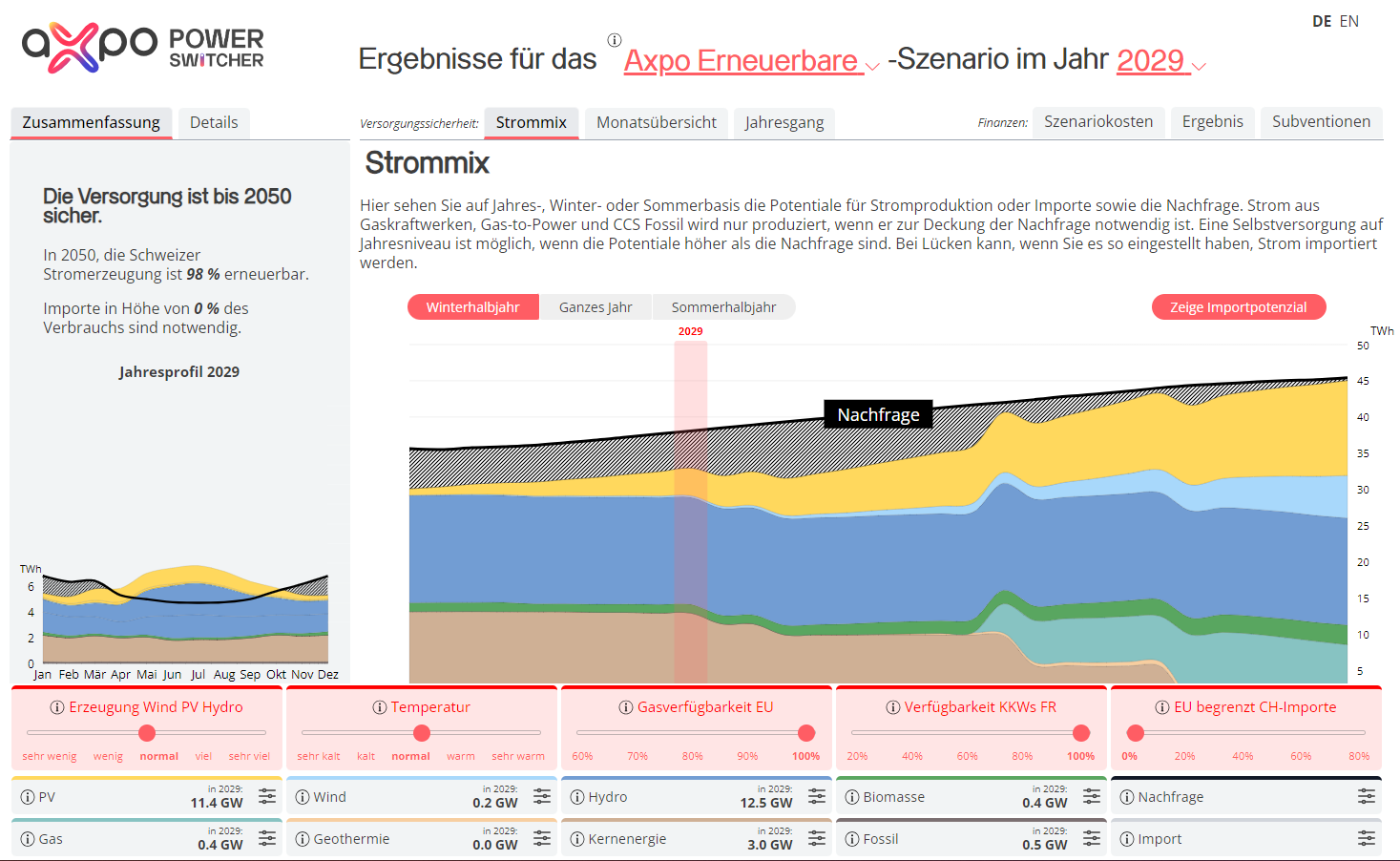05.05.2022 | Over the counter, on the exchange: where market players meet
Power trading - so simple, so complex
Most of us are familiar with stock exchange trading from what we see and read in the media. But electricity and other energy sources are also traded on exchanges. And just like shares, the same principles apply: supply and demand determine the price.
Unlike other commodities, electricity - at least today - can only be stored to a limited extent and therefore cannot be supplied from stock. However, to ensure the safe and stable operation of the power grid, only as much power is fed into it as needed. In Switzerland, Swissgrid is responsible for ensuring the stability of the transmission grid
OTC, EEX and EPEX - where trading takes place
The most important trading venues in Europe are over-the-counter (OTC) trading and the legally regulated exchanges, for example the European Energy Exchange EEX based in Leipzig and the Paris-based European Power Exchange EPEX.
In trading, suppliers and buyers each have their respective price expectations. Suppliers who demand the lowest price are considered first, while the buyers who bid the most get electricity first. The electricity price is the price that suppliers are willing to accept and buyers are willing to pay.
Derivatives market - long-term planning and hedging
On the EEX, long-term contracts are traded on a forward basis. The futures market enables long-term planning. In addition, players such as Axpo can hedge against price fluctuations through long-term financial contracts or profit from arbitrage transactions, that is transactions that generate profit through differences in prices or interest rates.
Exchanges for standard products
Standard products are monthly, quarterly or annual contracts, also called futures, for so-called base and peak products. These different products have been structured because electricity consumption is usually higher during the day than at night: so-called baseload products cover the base load of a complete day from 0 to 24 hours. Peak load products serve periods of highest demand.
For example, if Axpo sells a certain amount of electricity today for x cents per kilowatt hour (kWh), it will be able to supply the electricity in a month, quarter or over several years – depending on the contractually agreed term – for x cents over that period - regardless of whether the price is higher or lower at that future date. If the market price is lower than the contracted price, the hedge has paid off for Axpo which will make a profit on the transaction.
OTC for off-standard products
In off-standard trading, the electricity is either traded through a broker or the supplier and buyer negotiate directly on a bilateral basis rather than on the exchange. These bilateral transactions are not publicly visible. As a rule, however, the prices achieved there are based on those of the official power exchanges.
Spot market - balancing short-term fluctuations
Electricity is traded on the spot market at short notice. This allows electricity suppliers to balance out or optimise fluctuations in consumption. A distinction is made between the day-ahead and intraday markets. Day-ahead trading, as the name suggests, allows electricity to be procured on the day before. In intraday trading, it can even be concluded up to five minutes before the start of delivery.
Matching trading transactions with physical electricity flows
To match trading transactions with physical electricity flows, so-called balancing groups are used. A balancing group consists of entry points, such as power plants, and exit points, the customers within the electricity grid’s geographically defined control area. The energy supplier or trader responsible for the balancing group combines all transactions and must have bought or generated and fed into the market as much electricity as they have sold. In other words, it must ensure a balanced power supply.
If an imbalance occurs in the network – due to the unexpected failure of a power plant, for example – energy balancing comes into play. Traded on a separate market for different geographic control zones, control energy can be fed into the grid within a very short time to stabilise it and is supplied, for instance, by Axpo's Limmern pumped storage power plant.




.jpg)





